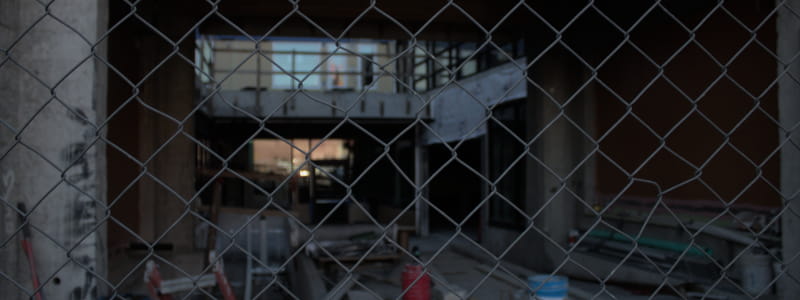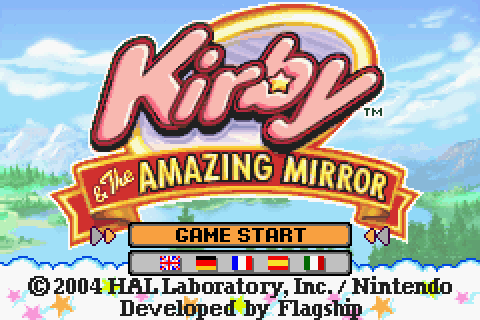
While everyone always lists Kirby’s Adventure or Kirby Super Star or Kirby’s Air Ride as their vote for the best Kirby game, my favorite is Kirby & the Amazing Mirror. Granted, I can understand why a lot o’ people may not be so fond o’ it, since what I most like ’bout it is a quality a lot o’ people seem to not like in games: deep, labyrinthine worlds full o’ hidden collectibles. A witness to this is the fact that despite Kirby Super Star’s reputation, its subgame, “The Great Cave Offensive,” which is somewhat similar to Amazing Mirror—though much mo’ linear & with treasures that lean mo’ toward the aesthetic than the technical—is oft derided as tedious, whereas I consider it my favorite.
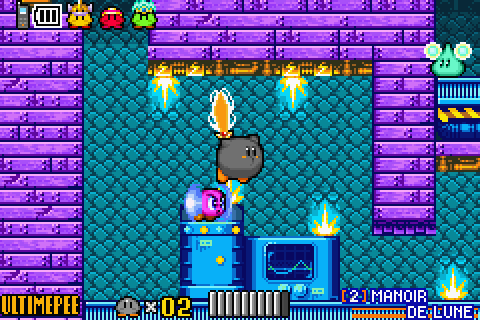
Amazing Mirror is a “Metroidvania,” & probably the best, though largely due to a special quirk o’ Kirby games. It has some o’ the most open-ended exploration o’ any Metroidvania: after a quick intro section & the 1st boss, you can pretty much go everywhere ‘cept the final zone. You can explore the “areas”—which are mo’ loose groupings o’ rooms, since one moves ‘tween “areas” through the same simple doors one uses to move ‘tween rooms within a “area”—in any order, beat all bosses but the 1st in any order. Rather than having to collect powerups in 1 section to reach the next, & so on, all puzzles are based on what ability Kirby has, which can be found in many places. For instance, the 2nd area has a route that leads directly to the 9th & final area—in fact, the only way to reach that area. It’s mo’ a giant world than separate areas.
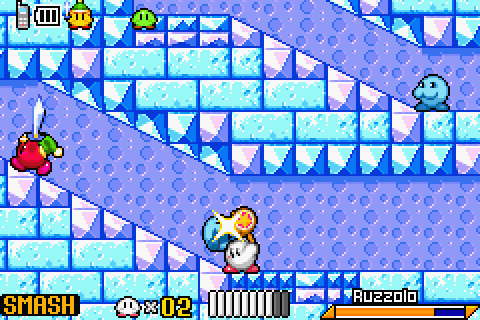
The reason this works so well is ’cause Kirby games are so easy that the 9th area is hardly any harder than the 2nd area. That’s the downside to open-ended games: they make difficulty curves harder to carve—& those unfortunate greenhorns who’ve stumbled wrongly through the 1st Legend of Zelda or Final Fantasy II have learned the importance o’ well-wrought difficulty curves.
That said, transport through these areas are made mo’ convenient & less repetitive by unlocking hub rooms, which lead back to the main hub where you start each game session.
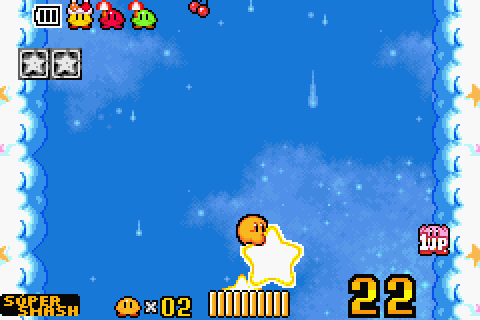
As mentioned, the treasures in Amazing Mirror aren’t as interesting as getting seasonal hearts or a lucky cat or the bucket Wario drops on Mario & his friends’ heads, but they are actually useful to gameplay… sometimes. Sometimes they’re just spray cans that allow you to paint all o’er Kirby or tracks to the sound test; but some are hearts that give extra health points or maps for each area so one knows where one’s going.
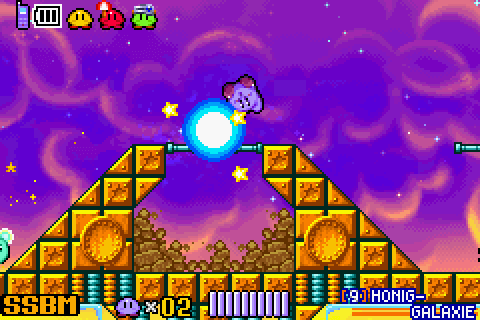
Amazing Mirror also has my favorite ability o’ any game: the Smash ability, based on Kirby’s moveset from Super Smash Bros. Melee & won by beating & eating a Master Hand miniboss, which allows Kirby to do an upper cutter that can release a blade wave quite a distance forward & reach quite high up, a side hammer swipe that can break strong blocks to the side, & a downward stone ability that allows one to break strong blocks downward. The only ability mo’ robust for solving puzzles is Meta Knight’s sword, gotten after beating the game; & there is only 1 or 2 puzzles in the entire game that can’t be solved with Smash.
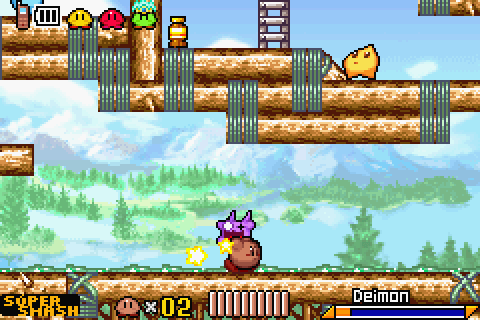
Amazing Mirror also had great aesthetics. The backgrounds are painterly beautiful (‘specially “Carrot Castle”’s & “Candy Constellation”’s & the sprites are fluidly cartoony without being crude.
Its music is some o’ my favorite Kirby music, with the following highlights:
- Rainbow Route
- Cabbage Cave (a remix o’ the “Forest” theme from Kirby’s Adventure that’s much better than the terrible Nightmare in Dream Land version)
- Olive Ocean
- Candy Constellation
- Hub
- Moonlight Mansion & Carrot Castle
- Pepperment Palace
